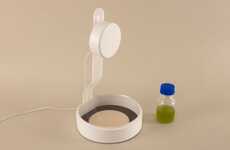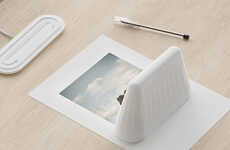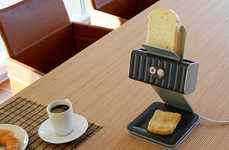
The Time Print Machine Uses Mounted Felt-Tips to Create Images
Deborah Kim — August 3, 2011 — Art & Design
References: flickr & thisiscolossal
The Time Print Machine by designer Paul Ferragut was created by using felt-tip pens that connect to a device controlled by custom hardware that prints out pointillist images. The variation between depth and shading comes from the reaction of the pen and its ability to 'bleed' through the paper. The longer a dot is created, the more ink there is and therefore the darker the pixel ends up being. Although the machine is doing most of the creative work, the real artistry is the Time Print Machine itself.
Ferragut could potentially create any image with this machine but so far the artist has chosen to stick to portraits. At the moment the printing process is open to experimentation and can only at the moment print Yellow, Magenta, Cyan and Black. Each painting took roughly ten minutes to complete using the printing machine.
Ferragut could potentially create any image with this machine but so far the artist has chosen to stick to portraits. At the moment the printing process is open to experimentation and can only at the moment print Yellow, Magenta, Cyan and Black. Each painting took roughly ten minutes to complete using the printing machine.
Trend Themes
1. Pointillist Printing - The Time Print Machine demonstrates the trend of pointillist printing, which can be applied to various artistic and graphic design applications.
2. Custom Hardware Control - The use of custom hardware to control the printing process highlights the trend of personalized and precise machine control, offering opportunities for innovation in automation and robotics.
3. Ink Bleeding Effects - The Time Print Machine's utilization of ink bleeding effects showcases a trend of exploring unconventional techniques for creating visually striking artworks, opening up possibilities in mixed media and digital art.
Industry Implications
1. Art and Design - The pointillist printing trend can disrupt the art and design industry by introducing new techniques and aesthetics for creating traditional and digital artworks.
2. Graphic Design and Advertising - The custom hardware control trend presents opportunities for disruptive innovation in the graphic design and advertising industries, enabling precise and automated printing processes for promotional materials and visual branding.
3. Printing and Manufacturing - The ink bleeding effects trend can drive innovation in the printing and manufacturing industry by incorporating unconventional techniques and materials to create unique printed products and packaging designs.
2.2
Score
Popularity
Activity
Freshness















